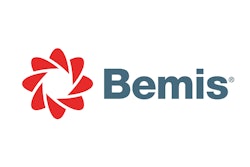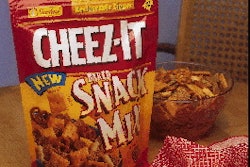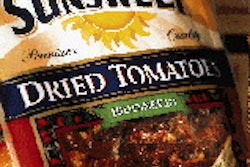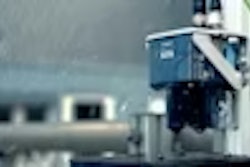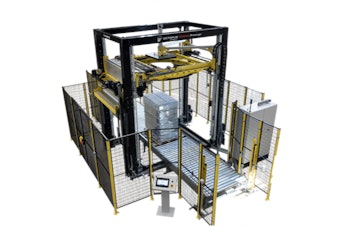Union Grove, WI-based Forever Ice Inc. markets its Flexible Ice(TM) as a reusable product that outdoor enthusiasts and picnickers can take with them to keep food cold and prevent sandwiches from becoming soggy. Users can freeze sheets or cubes of Forever Ice, then wrap them in and around food inside lunch boxes and coolers. Each sheet contains individual "pillows" that accommodate on average 15 g of water, about the same as one cube in an ice cube tray. Commercial customers can use Flexible Ice in trucks to keep cold shipments of food or medical products. The sheets or cubes can be washed and reused many times, according to Forever Ice.
From a packager's standpoint, it's the property of the films holding the filtered water, combined with customized thermoform/fill/seal equipment, that make Flexible Ice so interesting. Both forming and lidding films that contain the water are supplied by Curwood (Oshkosh, WI). The tf/f/s machine is from Hooper Engineering (Sarasota, FL).
Forever Ice introduced the product in '96, using a contract packager to fill the product on an older tf/f/s machine. In early '98, Forever Ice replaced the older unit with a Model N2500S servo motor-driven tf/f/s machine from Hooper and had it installed at the CP for production of Flexible Ice. The new tf/f/s operates at faster speeds, and it provides improved forming and sealing capabilities, according to Forever Ice. The new unit now thermoforms, fills and seals nine different products that range from an eight-cube sheet for school lunchboxes to sheets for commercial businesses that are about 20"Wx20'L.
There is space between the pockets on the sheet that allows consumers to cut the sheet into smaller sections. Consumers can cut individual cubes from the sheets if they wish, though Forever Ice sells a Six Pack Cooler(TM) that contains 33 individual cubes (1-lb worth) in a clear plastic bag with a header card. The company sells Flexible Ice by the lb. Its two primary sheet offerings are a 21/2-lb, 19"x16" size that includes 88 cubes, and a 11/4-lb, 19"x8" sheet that has 44 cubes.
Functional film
The forming web for Flexible Ice is Curwood's Curlon ICE® (Internal Coolant Exchange). It's a 6-mil, seven-layer material that includes nylon and linear low-density polyethylene. The film is supple and resilient, according to Curwood. The film's characteristics help Flexible Ice withstand multiple freeze/thaw cycles. The film's toughness helps it through the rigors of transportation. The supplier says the film is made by a proprietary coextrusion process that provides puncture-resistance, clarity, sheen and machinability. The 3-mil lidding structure, also from Curwood, is an adhesive lamination of oriented polyester and LLDPE. For the most part, Forever Ice uses unprinted film, though it is considering having the product name and its penguin logo printed on the film. Some commercial accounts request having their logo or other art printed on the film. In this case, says Forever Ice, Curwood supplies printed, or even metallized film.
Certainly, this is no ordinary film structure. While the company didn't provide cost figures, Forever Ice founder and owner I.C. Duros raves about the film. "It provides durability and unbelievable freeze/thaw characteristics," he says. "It maintains full flexibility when it's frozen, and that's important. It also allows for the natural expansion of water as the water freezes. The film gives the product a lifespan of many years. In fact, I'm still using sheets of the ice from when I developed the product more than four years ago. The film doesn't degrade."
Asked how he decided on using the Curwood films, Duros says, "We tried many plastic films and Curwood was one of them. They sent us samples and their film performed better than anyone else's. It had the best consistency and the best price. And their delivery time was best."
In-house efficiency
Duros believed that using a CP to launch the product was cost-efficient, he tells Packaging World. At that time, he was concerned about the economics of running the machine in-house. "Buying the machine, setting it up, maintaining it and hiring employees to run the machine, sometimes on three shifts," would be cost-prohibitive, he felt. Since then, Duros has changed his tune.
"We decided that the old axiom, 'If you want it done right, do it yourself,' was true," he says. "We've found that by doing it ourselves, our quality is way up." While Duros doesn't want to criticize the contract packager, he does admit, "its failure rate was huge."
By failures, Duros refers to packs that display "little abnormalities that we reject." Besides not being able to sell those packs, Forever Ice also absorbed the cost of the wasted packaging material and product. Forever Ice decided to stop using the CP and moved the Hooper machine to its own facility. By Jan. 1, 1999, Forever Ice began filling the product at its plant. The result: "Our failure rate has gone down by 12 percent," Duros estimates conservatively. He also says the machine operates 25% faster than its predecessor.
Multiple benefits
"By filling in-house, we're also running the new machine slightly faster than the former contract packer did," Duros asserts. "We base speed on the number of pounds-per-minute we can produce on the machine. We run the machine at nearly 40 pounds-per-minute," he estimates. "That's based on doing about 15 sheets a minute," of the 21/2-lb size.
Another benefit to in-house filling, Duros says, is scheduling flexibility. While a contract packer could adjust its schedule to accommodate a just-in-time delivery, the fact that a CP has other customers naturally means it cannot be as flexible as in-house manufacturing.
Duros says that typically the company operates the Hooper machine five days/wk, 10 hr/day. "We have about six months where we're extremely busy, and about six months where we're not," he notes, preferring not to reveal production volumes.
"What we like to do is receive a purchase order, calculate how much time we'll need to produce it on the machine, and then punch it out as fast as we can to meet just-in-time customer needs. We bring in people as we need them, and we've found that we haven't had to throw that much more into labor costs. The Hooper machine is essentially a two-person operation."
Custom filling
The tf/f/s process on the Hooper machine begins as the forming web unwinds to the forming section. Ron Duros, I.C.'s brother, says that heat, pressure and vacuum are used to form the pillows in this web. There is no preheating step in the process. The material then indexes to the filling station.
Mounted to the Hooper machine is an FG 2000 gravity filler from ELF Machinery (LaPorte, IN). According to ELF, this machine model normally comes with a maximum of 18 filling heads. But the customized machine used by Forever Ice has 99 electronically activated fill heads. The machine also includes a grid plate with quick-connect fittings to fit either of three different grid matrices to accommodate different filling configurations for the Flexible Ice product. Duros says he uses a variety of grid patterns to make sheets, one of which is an 11x8 pattern. The Hooper machine signals the ELF to commence filling.
Next, the lidstock unwinds from its roll and is heat-sealed at 300F to the forming web. The webs are sealed around each pillow. Hooper designed a custom sealing "gasket" that accommodates the "doming" of water in these pockets. Forever Ice considers the sealing process proprietary. What Duros does say is that during sealing, this gasket helps drain away some water and pushes out unwanted air bubbles. After sealing, the Hooper machine cuts the filled and sealed web into whatever size units the order requires.
Contract packing
Forever Ice ships cases of the filled and sealed sheets to contract packager Service Ingenuity (Racine, WI). "They do a bang-up job for us," comments Duros, who apparently hasn't soured completely on using CPs. Duros says that typically, a 11/4- or 21/2-lb sheet, or single pillows are sent to the nearby packer. At Service Ingenuity, sheets are rolled up and placed into cartons, then case-packed for distribution. Cartons are sourced from Beck Carton (Milwaukee, WI) per Forever Ice's specification.
The 24-pt newsboard carton material is clay-coated on the side that's offset-printed in four process colors. Cartons include a die-cut window that lets consumers see and feel the product. Color photos on the carton show how the product can be cut with a scissors to any size and how the cubes can be positioned in a cooler. The photos also illustrate that the sheet remains flexible when frozen.
There's also a chart showing the results of independent laboratory testing that indicates that the Flexible Ice product stays cool twice as long as ice packs. Ron Duros says, "If you take an ice cube, lay it on a plate, and place a cube of Flexible Ice on another plate and leave them at the same temperature, you'd see that the ice cube melts and the water migrates outward. Our cube remains in the film. While it thaws out, it remains at a [cooler] temperature."
I.C. Duros estimates that about 80% of Flexible Ice sales are at retail, with Walgreen's one of the company's most prominent customers. At retail, a "standard" 21/2-lb sheet sells for $4.95. The remaining nonretail product is sold to trucking companies, caterers and medical firms.
The effectiveness of the packaging materials and tf/f/s machine have helped the company create a success story out of the unusual product. "I can't say enough about the film or the machine," Duros concludes. "They've helped us fill the product, and the business is going like gangbusters."




